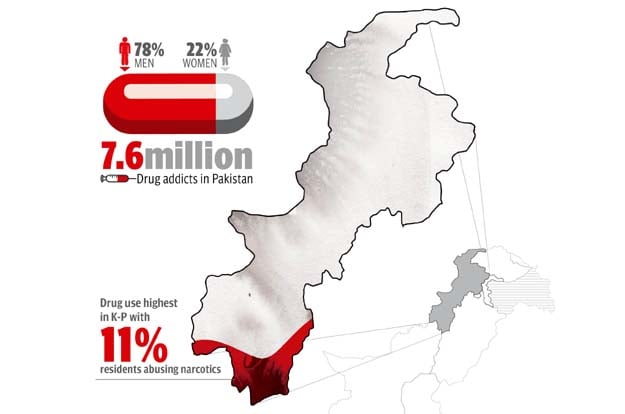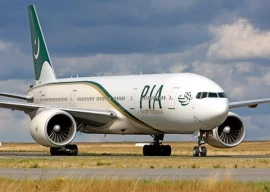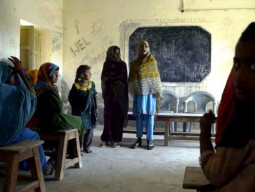
Some 23 years, Shahid was on a path full of promise. After graduating from the Don Bosco High School, he enrolled at Dyal Singh College. “I was smart and I was in love, but then I was hit with some domestic issues and other problems. And fell into drugs,” he said.
As his drug use grew worse, so did tensions with his family. After a heated argument with his brother four years ago, Shahid left for Peshawar. “Only my mother visited me since I left,” he said. “No one else.”
Shahid is but one of the estimated 7.6 million people of Pakistan who find themselves addled with addiction, according to a 2013 survey conducted by the United Nations and Pakistan’s Narcotics Control Division and Bureau of Statistics. A vast majority of them – 78 per cent to be exact – are men, with more and more youngsters falling for the allure of narcotics day by day.

K-P on the frontline
Drug use, according to the report, is highest in Khyber-Pakhtunkhwa, where some 11 per cent of the total populace is addicted to controlled substances. Even though Pakistan has managed to reduce the use of its territory for transshipment of narcotics, its proximity to the global drug production and trafficking network means Pakistanis, particularly in K-P, continue to be vulnerable to drug abuse.
According to the World Drug Report 2019 released by the UN Office on Drugs and Crime (UNODC) on Wednesday, large quantities of cannabis and opioids continue to be seized from the country. After Spain, Pakistan reported the largest quantities of cannabis resin seized in 2017, the report stated. That same year, the country also reported the largest amounts of heroin and morphine seized after Afghanistan and Iran.
While the drug trafficking route that sees heroin transported via Pakistan to other destinations in South Asia and Africa is witnessing ever-declining importance, the report noted that the Balkan route – which includes Afghanistan and Iran – is the single largest heroin trafficking pathway and accounts for 47 per cent of global quantities of heroin and morphine seized outside Afghanistan in 2017.
Coming back to sober life
While data on drug users in K-P is far from exact, a total of nine rehabilitation centers for drug addicts are currently run across the province – six on a regular basis and three others maintained on finances provided via the annual development fund.
Statistics available with the K-P Social Welfare Department reveal that around 2,000 drug users – including 1,657 heroin users, 185 opium users, 74 alcoholics, and 46 morphine users – were treated at these centres.
513 addicts were treated at these centres in 2014-15 and 548 in 2015-16. In the following fiscal year, 139 drug addicts were trained as carpenters and electricians. A total Rs18 million or Rs36,673 per head were spent of rehabilitation efforts in K-P in 2016-17.
A total of 365 drug addicts are currently admitted in rehabilitation centers with 10 in Lower Dir, 41 in Nowshera, 129 in Peshawar, 64 in Dera Ismail Khan, 153 at Kohat and 14 at Mardan. Around 102 drug addicts are currently being provided with medical assistance and rehabilitation in district Swat.
“It is our moral duty to endeavor to save our near and dear ones from the curse of narcotic drugs,” said PSP Secretary Narcotics Amjad Javed Saleemi at the launch event of the World Drug Report 2019. “It is a parasite which is eating up humanity. We have been taking effective measures and Inshallah we will curb this menace,” said Minister of State for SAFRON and Narcotics Control Shaheryar Afridi.
World Health Organisation Representative Dr Palitha Mahipala pointed out the role tobacco use plays in increasing drug abuse risks. “It is a first step towards this menace. It is the only legal drug that kills many of its users.”
*NAME HAS BEEN CHANGED TO PROTECT IDENTITY*(WITH ADDITIONAL INPUT FROM OUR CORRESPONDENT IN ISLAMABAD)
Published in The Express Tribune, June 27th, 2019.
1730464111-0/raygun-(1)1730464111-0-405x300.webp)
1730967569-0/BeFunky-collage-(28)1730967569-0-165x106.webp)
1730967164-0/trump-(21)1730967164-0-165x106.webp)
1730965998-0/BeFunky-collage-(27)1730965998-0-165x106.webp)
1730965430-0/trump-(20)1730965430-0-165x106.webp)












COMMENTS
Comments are moderated and generally will be posted if they are on-topic and not abusive.
For more information, please see our Comments FAQ